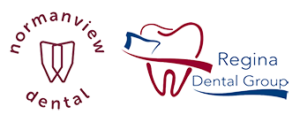Fast Facts on Oral Abscesses
What is an oral abscess?
An oral abscess is an infection at the root of the tooth or between the gum and a tooth. It’s a result of tooth decay and erosion, which is caused by cavities or poor oral health habits. It creates buildup of pus that forms inside the teeth, gums or throat.
There are three types of abscesses:
- Gingival abscesses: residing only in the gum tissue, this type of abscess does not affect the tooth or the periodontal ligament.
- Periodontal abscesses: this abscess starts in the supporting bone tissue structures of the teeth.
- Periapical abscess: this abscess commences in the soft pulp of the tooth.
Oral Abscess Causes:
Oral abscesses are caused by bacterial infections that have accumulated in the soft pulp of the tooth. The soft pulp of the tooth contains blood vessels, nerves and connective tissue.
Other factors that may cause oral abscesses:
- Poor dental hygiene: Not taking proper care of your teeth and gums (i.e. such as not brushing your teeth twice a day and not flossing) can increase your risk of tooth decay, gum disease, tooth abscess, and other dental and mouth complications.
- High sugar intake: Frequently eating and drinking foods rich in sugar can contribute to dental cavities and turn into a tooth abscess.
Oral Abscess Symptoms:
The main symptom of a dental abscess is pain. The pain is quite unbearable, gets worst with time and may radiate to your ear, jawbone and neck.
Other symptoms may include:
- Pain in the affected area when biting or touching it
- Sensitivity to cold or hot food and liquids
- Foul taste in the mouth
- Fever
- General unwell feeling
- Difficulty opening the mouth
- Difficulty swallowing
Oral Abscess Treatment:
It’s important to know that dental abscesses do not go away without proper dental treatment. They can spread leading to more serious illnesses like sinus tracts or fistulas, cysts and sepsis – a potentially life-threatening complication when bacteria from your mouth spreads to other parts of your body. Therefore you should see a dentist sooner rather than later to begin treatment.
Step one: Diagnosis
Your dentist will start by diagnosing the severity of the abscess by probing your teeth which would most likely cause pain if you have an abscessed tooth. They’ll ask you to close your mouth, bite down, as well as check your gums and jawlines to see if they are swollen and red from infection. X-rays may also be required to check for erosion and decay of the bone around the abscess.
Step two: Treatment
Treatment involves draining the pus from the abscess. This is the only way to remove the infection and prevent any further complications. Your dentist will start by removing any debris in your periodontal pocket through scaling and root planing (a procedure that removes plaque and tartar from above and beneath the gum line). Depending on the severity of the infection, treatment may involve tooth extraction or root canal surgery.
With early treatment, the outlook for a gum abscess is positive. If left untreated, however, a gum abscess can worsen and lead to a potentially life-threatening infection. Visit any of our offices to speak with our dentists if you develop any pain, swelling, or discharge in your gums.
If you would like to learn more, please do not hesitate to give us a call or contact us to book an appointment.
